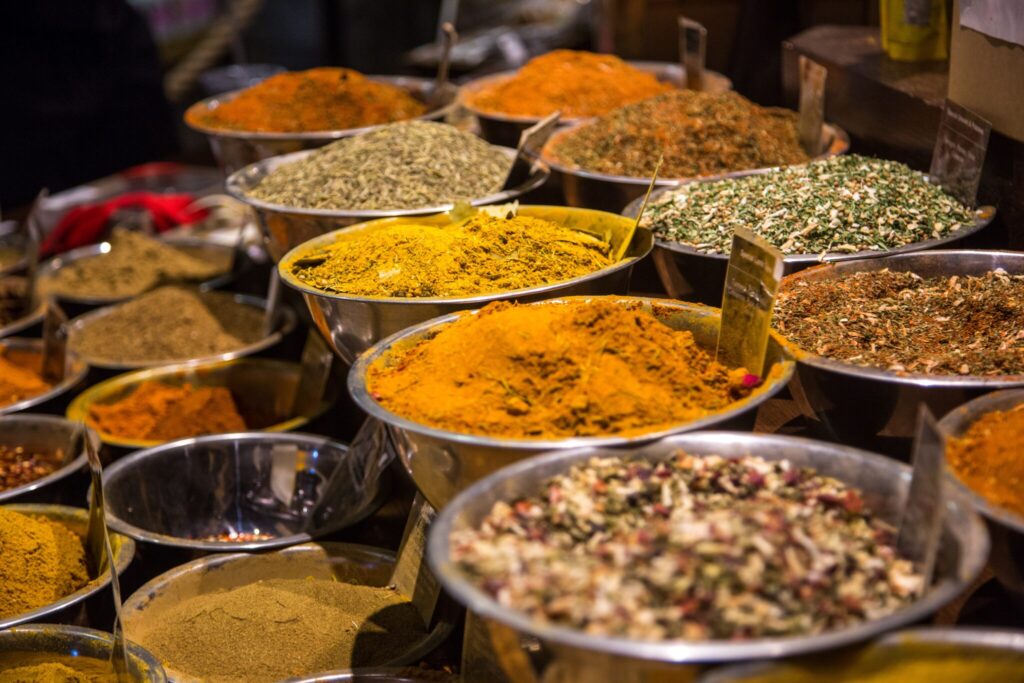News Team member Alexa Morales describes the need for new prenatal nutrition guidance to include fiber, as it promotes stronger microbiomes and better health outcomes in mothers and their babies.
2.
Traditional Medicine in the Modern World: Ayurveda

By News Team member
Editor’s Note: The is part of a series on Traditional Medicine in the Modern World. To read the introductory post, please go here.
Ayurveda is a traditional medicinal system that originated in India some 3,000 years ago. Ayurveda is translated as “knowledge of life” in Sanskrit, derived from ayur which means “life” and veda which means “science or knowledge”. Ayurveda is a holistic medical system that focuses on achieving a balance between the body, mind, and spirit to maintain health. Under this system, disease and illness are thought to arise due to an imbalance in an individual’s consciousness.[1] This traditional medicinal system can have positive impacts on health, especially when used as a complement to standard medical care. However, the stigma and lasting effects of colonization prevent modern medicine from the complete acceptance of Ayurveda.
Currently in India, Ayurveda is regarded as a form of medical care equal to other traditional systems like traditional Chinese medicine, as well as conventional Western medicine. To be a practitioner of Ayurveda in India, individuals must undergo state-recognized training. In contrast, in the United States, Ayurvedic practitioners are not licensed and there is no national standard for training or certification. However, some states have approved specific Ayurvedic educational schools.[1]
To explore the perceptions of Ayurveda in modern or Western medicine, we must first look at history. Western medicine did not enter the Indian subcontinent until the arrival of Europeans. Initially, Western medicine served the health needs of Europeans in the subcontinent and excluded the health of much of the indigenous Indian population. Despite the financial burden and initial disinterest in Indian health, Europeans eventually shifted their focus to Indian health due to the threat of economic loss due to disease and international pressures. Scholars of colonial medicine have suggested that Western medicine, despite initially being introduced as a solution to diseases and epidemics, was instead a tool for colonization. Western medicine allowed for the prolonged colonial rule over the colonized. [4]
Early in the colonial period, there was mutual support between the practitioners of Ayurveda and Western medicines systems. However, scientific skepticism created a boundary between the systems that resulted in the characterization of Ayurveda from scientific and legitimate medicine to an unscientific and superstitious practice. Due to this skepticism, the colonial government withdrew support of Ayurveda, and hospital medicine emerged. The newer medicinal practices that came with Western medicine marginalized Ayurveda as a practice. The traditional medicine system was regarded as outdated by those in power, and the colonial government refused to recognize Ayurvedic physicians as legitimate practitioners. It became hard for Ayurvedic practitioners to receive employment in medical institutions outside of low-grade positions.[4]

Supporters of Ayurveda considered this marginalization of the practice as oppressive and dismissive of indigenous people and practices. This resulted in the revitalization movement, a movement with the goal to revitalize Ayurveda in an attempt to compete with Western medicine. To challenge the authority of Western medicine, Ayurveda practitioners began to standardize their medicine and seek ways to modernize their practices to sway the public to favor Ayurveda as a legitimate medical system.[4]
Due to the efforts of the revitalization movement, Ayurveda sustained practice beyond the colonial period. Currently, there are several efforts globally that use Ayurveda in conjunction with modern medicine. Ayurveda is utilized across Asia in countries such as Bangladesh, Japan, Malaysia, Maldives, Myanmar, Nepal, Singapore, Sri Lanka, Japan, and Thailand. In the Americas, specific Ayurveda treatments and products are also available for purchase. These treatments and products are also available in many countries in Northern Europe and in South Africa. Germany, specifically, accounts for almost half of the exports of Ayurveda products from India.[2]
Epidemiologists, geneticists, biochemists, molecular biologists, and physicians alike have explored the potential of Ayurveda as a complement to modern medicine. Studies have validated the impact of the combined Ayurveda and modern medicine therapeutic approach to treat difficult disorders. This has proven to be effective for specific disorders that modern medicine alone has been insufficient for. For example, there is a comprehensive therapeutic approach that includes both Ayurveda and modern medicine to treat arthritis. Several controlled drug trials have proven that Ayurvedic drugs can impact Rheumatoid Arthritis and Osteoarthritis knees. These trials also support the concept of immune-modulation and health, which falls under the Ayurveda concept of “Rasayana”.[3]
Ayurveda is also studied in the context of treatments such as oral medicines, detoxification treatments, and treatments for patients suffering from traumatic spinal cord injuries. A specific study investigated the role of Ayurveda in stem cell research using Medhya drugs to influence cell regeneration. Another study explored the application of Ayurveda in psychology and was able to conclude that Ayurvedic psychology has the potential to be a more comprehensive approach to psychological health. This is due to the Ayurvedic concepts such as the doshic systems of healing, the unique and specific therapeutic modalities, and Ayurveda botanical medicines. [2]
Evidence of Ayurvedic medicine’s impact on modern medical issues is extensive and promising. The continuation of such research is essential for the Ayurvedic revitalization movement, and for the overall institutionalization, standardization, and acceptance of Ayurveda in the public sphere. Through this, Ayurveda will continue to sustain through the effects of colonialism and reestablish itself as a legitimate and scientific system of medicine amongst the indigenous people of India and the global community.
References:
- “Ayurveda.” Johns Hopkins Medicine, https://www.hopkinsmedicine.org/health/wellness-and-prevention/ayurveda
- “Can Ayurveda Co-Exist with Modern Medicine?” Nanyang Business School, 16 July 2020, https://www.ntu.edu.sg/business/news-events/news/story-detail/can-ayurveda-co-exist-with-modern-medicine
- Chopra, Arvind, et al. “Ayurveda-Modern Medicine Interface: A Critical Appraisal of Studies of Ayurvedic Medicines to Treat Osteoarthritis and Rheumatoid Arthritis.” Journal of Ayurveda and Integrative Medicine, Medknow Publications, July 2010, https://www.ncbi.nlm.nih.gov/pmc/articles/PMC3087360/
- D.V., Kanagarathinam. “Revitalisation of Ayurveda in Colonial Tamil Region and Contributions of Pandit Srinivasa Narayana Iyengar – A Historical Perspective.” Journal of Ayurveda and Integrative Medicine, Elsevier, 23 Jan. 2019, https://www.sciencedirect.com/science/article/pii/S0975947617307751

